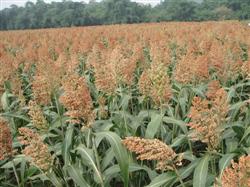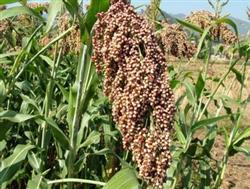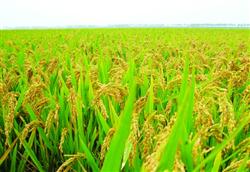High-yielding Cultivation Techniques of Sorghum

Sorghum is one of the main dry field crops in Haicheng, which has the characteristics of drought and waterlogging resistance, saline-alkali tolerance and strong adaptability. due to the change of people's dietary structure in recent years, sorghum rice has become one of people's favorite staple foods. properly expanding the high-dye planting area can realize crop rotation, balance profits and soil nutrients, and reduce the occurrence of diseases and insect pests. The main cultivation techniques are as follows: first, sorghum has a strong ability to adapt to soil, but the soil analysis of high-yield plots has the characteristics of deep plough layer, good structure, rich content of soil organic matter, suitable soil texture and pH. 2. Soil preparation and ridging according to the requirements of sorghum for soil, soil preparation and ridging should be carried out after crop harvest before autumn, so as to facilitate water storage and preserve soil moisture, prolong soil ripening time, and achieve the goal of "preserving soil moisture in spring and autumn and grasping spring seedlings in autumn". The tillage depth should be 20 cm, and strive for the autumn ridge, and the ridge distance should be 55-60 cm. If the ridge distance is not reached, top pulp should be used to make ridge in spring. In order to preserve a large amount of water stored on the surface of the soil in winter for seed germination. 3. Select excellent varieties according to the soil and climatic conditions of our area, we choose Xiongza No. 2 as the main variety. The variety has the characteristics of good rice quality, neat grain, well-developed root system, strong stem, resistance to leaf rust, lodging resistance and high yield. Fourth, seed treatment 1. The germination test before sowing is the basis for determining the sowing amount, and the seed can be made only when the seed germination rate is more than 95%. two。 Before seed selection, drying and sowing, the seeds should be selected or screened by wind, and the large and full seeds should be selected as seeds, and the seeds should be dried. After sowing, the emergence rate is high, the germination is fast, the seedlings emerge neatly, and the seedlings grow healthily. 3. Soaking seeds in 55-57 ℃ lukewarm water for 3-5 minutes and sowing seeds after drying has the effect of moisture conservation and disease control. 4. In order to prevent sorghum smut, seed dressing can be used to mix seeds with 5 grams per kilogram of seeds. Fifth, one sowing to keep the whole seedling within 5 centimeters of soil, the ground temperature is stable at 12-13 ℃, and the soil moisture is 16% 20% for sowing. The suitable sowing date is from May 5 to 10 in Haicheng area, and the sowing rate is related to the germination rate and seedling protection per mu; the germination rate is more than 95%, the seedling protection per mu of Xiongza No. 2 is about 6000, and the sowing amount per mu is 1.5ml / 2kg. Sowing 3-4 cm is appropriate, sowing should be consistent in depth, step on the bottom grid, cover the soil thin and thick, and suppress and preserve soil moisture. 6. according to the growth needs of sorghum, 2500 kg of agricultural fertilizer plus 10W monoammonium per mu and 5 kg of potash fertilizer were applied at one time. 4-5 kg ammonium sulfate is used to grow fertilizer, seeds and chemical fertilizer are opened to prevent seed burning. Topdressing was applied once at jointing stage and heading stage respectively. During the jointing period, urea 20W was applied at one time. Ear fertilizer, can be applied ammonium sulfate 8-10 kg. Strengthen field management 1. Interseedling and fixed seedling should be carried out when they have 3-4 leaves and 5-6 leaves, which can reduce the consumption of water and nutrients and promote the healthy growth of seedlings and the early development of strong seedlings. two。 Two times of intertillage at seedling stage. The first time was combined with fixed seedlings, and the second time was carried out 10-15 days later. It can preserve soil moisture and increase temperature, grow roots and strong seedlings, eliminate weeds and reduce the harm of weeds, such as ploughing and cultivating soil after vegetative growth, so as to enhance the ability of wind resistance, lodging resistance, drought resistance and moisture conservation. 3. The squatting seedling usually starts from the fixed seedling to the end of the plucking festival. The underground stem nodes are exposed in the soil around the roots of Xinkai seedlings, which is beneficial to increase the ground temperature, promote the root system, strengthen the growth of high dye, enhance the ability of drought resistance and lodging resistance, and obtain higher yield. Comprehensive control of diseases and insect pests the main diseases and insect pests of sorghum in our city are sorghum smut, aphids and underground pests. Control underground pests with 5% four mixed phosphorus 1.5 kg to fine soil 15 kg, sowing can be evenly sprinkled in the dragon ditch. Paeonia lactiflora can last 40 days. To control aphids, 3% dimethoate powder can be used, 2.5 kg per mu for foliar spraying, or 5% methyl phosphate 1.5 kg to fine soil 15 kg, sprinkled in the field. 9. The suitable harvest time of sorghum is at the end of wax ripening, when the grain is full and the starch content is high. Shengcheng usually harvests around October 1.
- Prev

New cultivation techniques for High yield of Sorghum
1. Timely sowing to protect the whole seedling sowing date is based on soil temperature and soil moisture. In early spring, seeds can be sown when the soil is 10 centimeters deep and the ground temperature is 12 ℃ and the water content is 15-20%. If necessary, you can first irrigate water to replenish moisture and then sow or sit in water to add moisture to sow to prevent bud drying and uneven emergence of seedlings. Liaoning is the main producing area of sorghum in Liaoning.
- Next

Rice topdressing potassium fertilizer
Potassium topdressing could significantly increase rice yield. Sufficient potassium is beneficial to enhance photosynthesis, promote sugar synthesis and accumulation, improve plant resistance, but also enhance the respiratory capacity of rice roots, promote nitrogen absorption and protein synthesis, so that rice grains are large and plump, high and stable yield.
Related
- The first cup of black tea in spring, the flavor and history of tea gardens in Kenya, Africa
- The computer can not only choose potatoes, but also grow tea rice. AI will grow winter oolong tea champion.
- It is not only the inflated tea bitten by insects, but also engraved with the four seasons tea in Beipu.
- The Oriental Beauty Tea Festival in Zhuxian County takes the stage at the weekend to experience the plus-size feast of oil tea.
- & quot; Oriental Beauty Tea & Exploration of Emei in Hsinchu, the hometown of quot;
- The new variety of strawberry "Tainong 1" dessert is the first choice with mellow aroma. Crimson gorgeous
- History of Tea in Taiwan: from Wild Inner Mountain to Export Tea Garden
- Two types of Taiwan Oriental Beauty Black Tea won the British three-Star Award for Childhood Tea Xiang Zhang Jiaqi changed from pilot to champion tea maker.
- Banana species and varieties: the planting history of Taiwan Xianren banana and dwarf banana is long, is banana disease resistant?
- Coffee planting Technology: Qianjie Coffee from Seedling to harvesting

